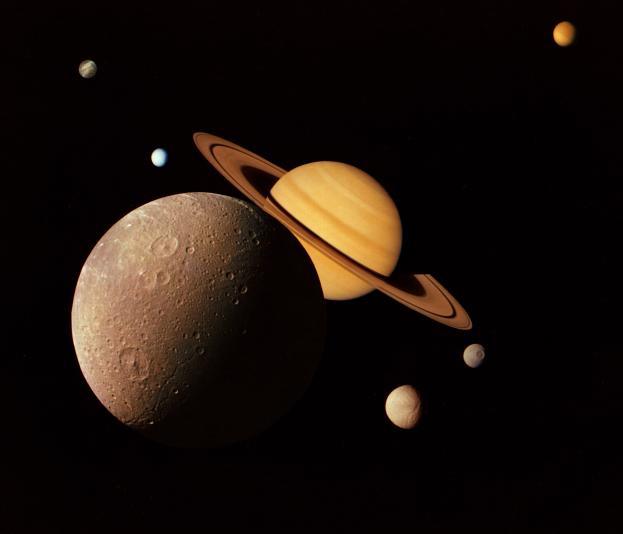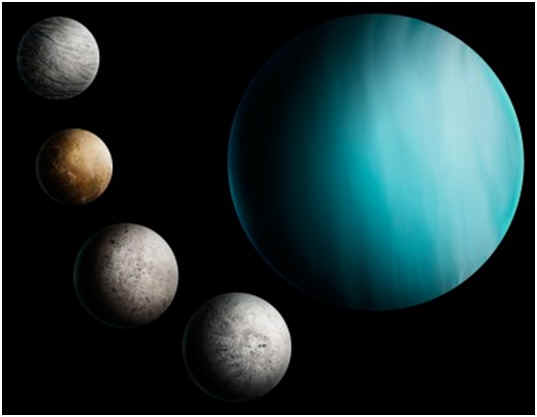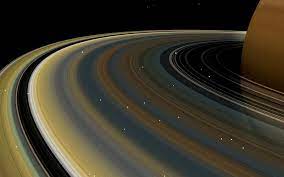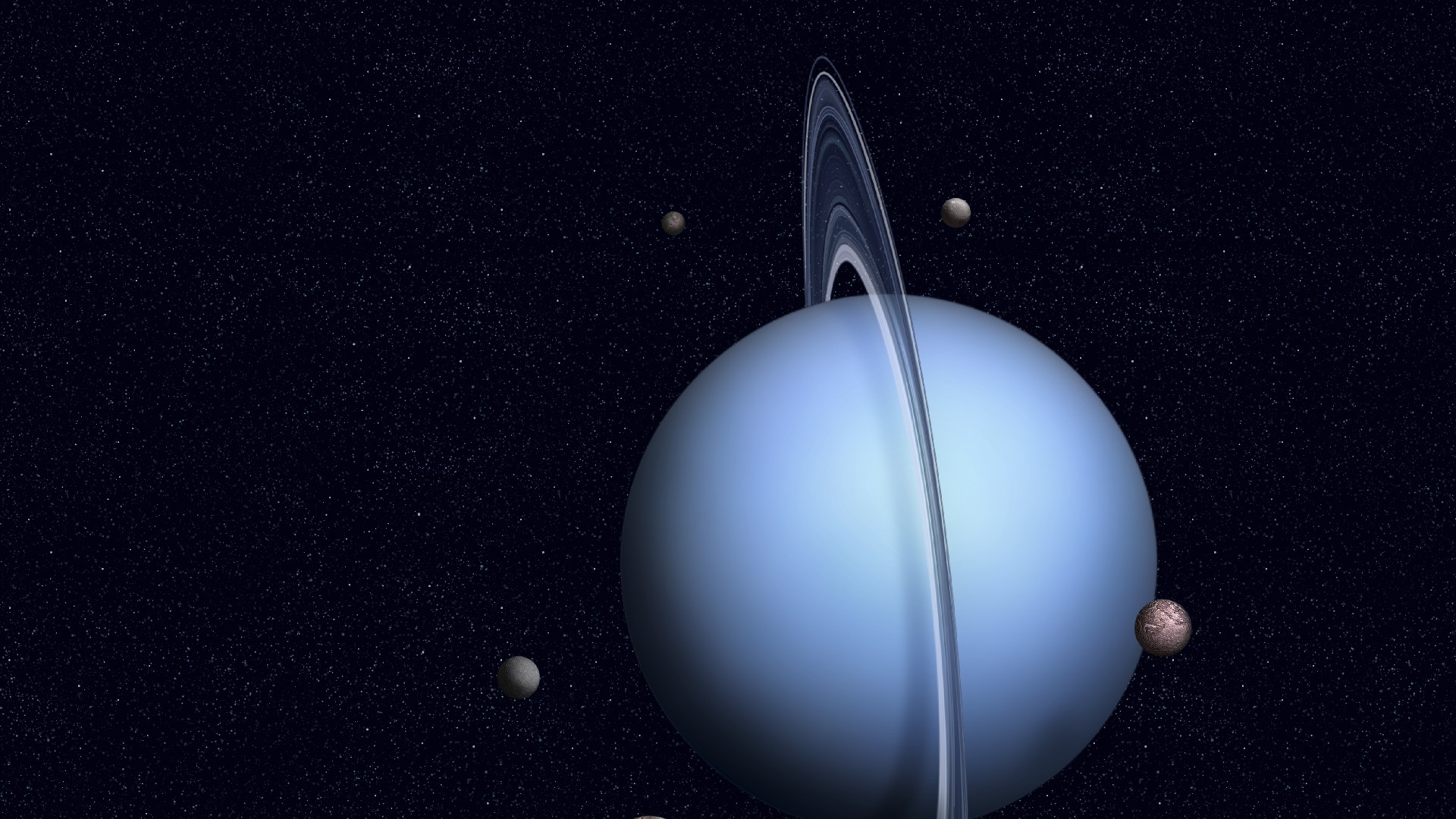Neptune means:
At first, Neptune was only the god of water, but later on this was extended to include the sea when he became associated with the Greek god Poseidon.
How much would you weigh on Neptune?
If you weigh 70 pounds (32 kg) on the Earth, you would weigh 78.5 pounds (36 kg) on Neptune.
The Planet
For many, centuries people did not know that this planet even existed. It was discovered by Johann Galle and Heinrich D’Arrest in 1846.
Neptune is the smallest of the four gas giants in our Solar System. Much like Saturn and Uranus, Neptune’s atmosphere contains hydrogen, helium and methane.
Not much was known about Neptune until it was visited by the spacecraft Voyager 2 on August 25, 1989. Voyager 2 took many pictures of the planet, and much of what we know today about Neptune came from this single visit. These pictures show a brilliant blue planet with a few thin white clouds laced around its surface.
In Neptune’s atmosphere, there is a large white cloud that moves around rather quickly. The “scooting” of this cloud around the atmosphere has led it to be named “Scooter.”
When Voyager 2 visited Neptune, its pictures showed a giant storm much like the storm on Jupiter. This storm is called the “Great Dark Spot” because it appears as a dark oval shape on the surface of the planet. We do not know how long this storm has been active or if it is still present. More recently, the Hubble Space Telescope sent pictures back to Earth and there was no sign of the Great Dark Spot. These pictures did show two other dark spots that eventually faded away.
Neptune is a very windy place. No other planet in the Solar System has winds that are as strong as Neptune’s. The winds near the Great Dark Spot were believed to have reached nearly 1,200 miles per hour (approx 1931 km per hour). Perhaps this extremely windy atmosphere contributes to the appearance and disappearance of the great dark spots.
Rings
Neptune has six rings which circle the planet. These rings are believed to be fairly new. The rings are more irregular than the rings of other planets. There are areas of varying thickness throughout the rings.
Moons:
Neptune has 13 moons that we know of. Because Neptune is so far away, it is difficult to see any of these worlds. There are probably many more moons orbiting this blue planet which we have not yet discovered. Perhaps you will be the astronomer who discovers some of these worlds. The first moon to be discovered was Triton. Triton was discovered by an amateur astronomer in England named William Lassell only 17 days after Neptune was discovered in 1846. The names of the other moons are: Despina, Galatea, Halimede, Laomedeia, Larissa, Naiad, Nereid, Neso, Proteus, Psamathe, Sao, and Thalassa.






